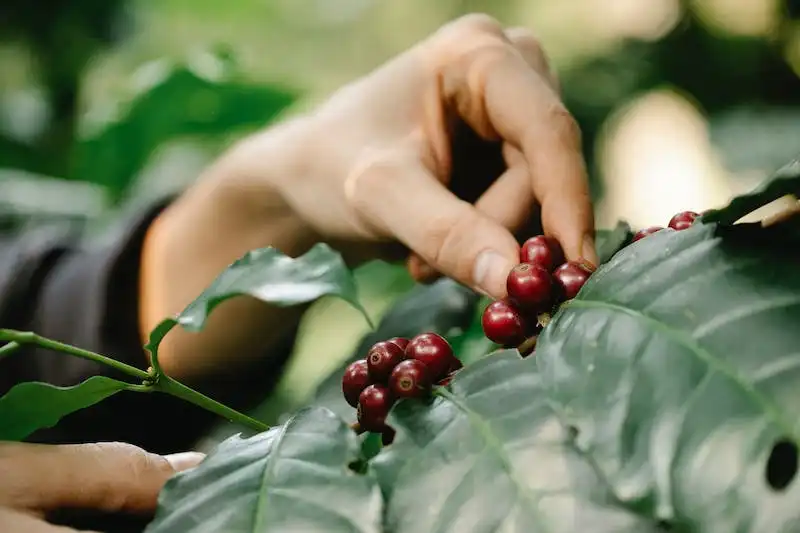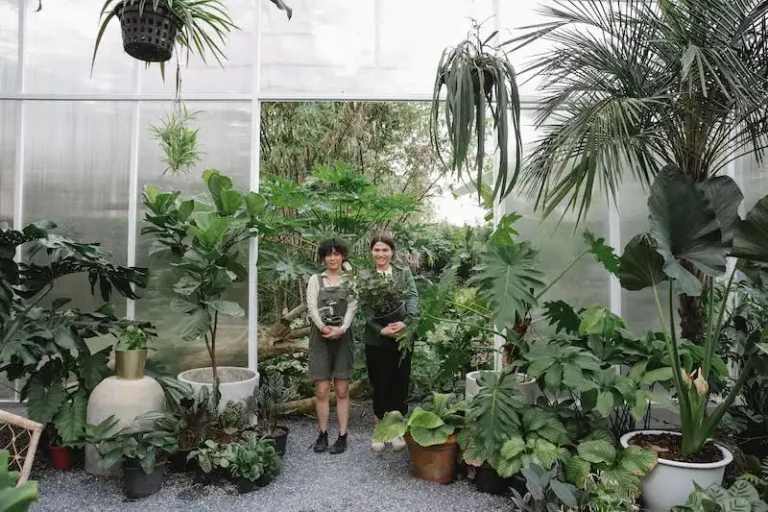If you’re an early riser and love gardening, then you’ll be excited to learn some thick tips from MSU Extension on how to enjoy a robust herb and vegetable garden. From planning and planting to growing and storing, MSU Extension has you covered.
When it comes to storing herbs and vegetables, mulch is your best friend. Not only does it help keep the soil moist, but it also forces the plants to grow up and not out. By using mulch, you can safely store your herbs and vegetables for long months, even throughout the winter.
For herbs, it’s best to begin harvesting them after the first frost. This will ensure that the flavors are at their peak. Dig up the herbs and remove the soil gently with a brush. Hang them upside down in a cool, dark cellar to allow for air circulation.
If you’re storing vegetables like potatoes, it’s important to let them sit in the ground a bit longer. Wait until the first frost has passed, then remove them from the ground and brush off any excess soil. Store them in a cool, dry place to prevent them from sprouting.
By following these MSU Extension tips, your herb and vegetable garden operation will be a success. Not only will you have flavorful herbs and robust vegetables to enjoy throughout the year, but you’ll also save money by growing your own.
Harvest
Harvest time is the most exciting and rewarding period for gardeners. It’s the time when you can finally reap the fruits of your labor and enjoy the bountiful harvest. Whether you’re raising vegetables, fruits, or herbs, harvesting is the culmination of months of hard work and dedication.
When it comes to crops like corn, beets, and potatoes, it’s important to harvest them at the right time to ensure the best flavor and texture. For example, corn should be harvested when the kernels are plump and milky, while beets should be harvested when they are small and tender. Potatoes, on the other hand, should be harvested after the vines have withered and died back.
If you’re growing root vegetables like carrots or radishes, it’s essential to learn the correct harvesting techniques. Use a fork or shovel to gently loosen the soil, being careful not to damage the roots. Once loosened, you can carefully lift them out of the ground. Be sure to remove any excess soil and cut off the tops before storing them.
For crops like tomatoes, peppers, and cucumbers, harvesting can be done throughout the season, as they will continue to produce new fruits. Simply twist or cut them off the vine when they are ripe and ready to be eaten. Be sure to wash them thoroughly before enjoying.
Some crops can be harvested early and allowed to ripen indoors. For example, tomatoes can be picked while still green and left to ripen on the kitchen counter. This is also true for herbs like basil and oregano, which can be dried and stored for later use.
When it comes to long-term storage, it’s important to properly prepare and store your harvest. Many fruits and vegetables can be stored in a cool, dark place like a cellar or basement. Other crops, like potatoes and onions, should be stored in breathable bags or crates to prevent them from spoiling.
If you’re raising livestock, harvesting time is also an important moment. For example, if you’re raising grass-fed beef, it’s essential to harvest the animals at the right time to ensure the most flavorful and tender meat. This can be done by learning proper butchering techniques and using the right equipment.
In conclusion, harvesting is a crucial part of the gardening process. It is the time when you get to enjoy the fruits of your labor and begin to reap the rewards of all your hard work. By following these tips and techniques, you can ensure a successful harvest that will provide you with delicious and nutritious food for months to come.
Soil moisture
Soil moisture is an important factor to consider when growing plants. It refers to the amount of water held in the soil, and it can greatly affect the health and growth of plants. Soil with the right amount of moisture will provide a good environment for plants to grow, while soil that is too dry or too wet can cause issues.
When it comes to soil moisture, timing is key. The best time to check soil moisture is in the morning, as this will give you an accurate reading of the moisture levels from the previous day. You can use a soil moisture meter or simply dig down a few inches and feel the soil with your hands to determine the moisture content.
There are a variety of ways to improve soil moisture, depending on the needs of your plants. If the soil is too dry, you can water it more frequently or use irrigation methods such as drips or sprinklers. On the other hand, if the soil is too wet, you can let it dry out by reducing watering or improving drainage.
In order to retain soil moisture, you can use mulch or compost. Mulch helps to retain moisture by reducing evaporation, while compost improves soil structure and holds moisture more effectively. Using organic materials like straw or leaves can also help to retain soil moisture.
Another important factor to consider when it comes to soil moisture is temperature. Soil temperature affects the rate at which water evaporates from the soil, so it’s important to pay attention to temperature fluctuations. For example, in hot and dry weather, soil moisture levels may decrease more rapidly, while in cooler temperatures, soil moisture may be retained for a longer period of time.
When storing soil moisture for later use, it’s important to do it correctly. You can store soil moisture in bags or pots, ensuring that it is well-sealed and protected from evaporation. It’s also important to store soil moisture in a cool and dry place, away from direct sunlight, as this can cause the moisture to evaporate.
In conclusion, soil moisture is an important factor for plant growth. It is crucial to monitor and manage soil moisture levels to ensure optimal conditions for plants to thrive. By understanding the ideal moisture levels for your plants and implementing appropriate watering and soil management techniques, you can help your plants grow and flourish.
Soil temperature
Soil temperature plays a crucial role in the growth and development of plants. It affects the germination of seeds, the growth of roots, and the overall health of the plant. Different plants have different temperature requirements, so it is important to understand the optimal soil temperature for the plants you are growing.
In general, soil temperatures should be above freezing in order for plant growth to occur. When the soil temperatures reach around 50°F to 55°F, many plants begin to sprout and show signs of growth. If the soil temperature is too cold, the seeds may not germinate or the plant may wither and die.
It is also important to consider soil temperature when harvesting crops. Some crops can tolerate cooler soil temperatures, while others need warmer soil to properly develop. For example, potatoes need soil temperatures between 60°F and 75°F to grow and mature. If you harvest potatoes too early or too late, they may not have the desired texture or flavor.
Properly storing harvested crops is also influenced by soil temperature. Many fruits, vegetables, and herbs are best stored in a cool, dark place with temperatures around 40°F to 60°F. This can be a cellar, pantry, or even a refrigerator. Storing food at the right temperature helps preserve their freshness and nutritional value.
During the colder months, it is important to protect plants and crops from freezing temperatures. Mulching the soil can help insulate the plants’ roots and protect them from the cold. Additionally, using row covers or portable greenhouses can provide extra protection and allow for extended growing seasons.
Monitoring soil temperature is essential for successful gardening and farming. By understanding the temperature requirements of different plants, you can ensure optimal growth and harvest. Whether it’s raising vegetables, herbs, or even flowers, a little knowledge about soil temperature can go a long way in helping your plants thrive.
- Soil temperature affects seed germination and plant growth.
- Different plants have different temperature requirements.
- Soil temperatures should be above freezing for growth.
- Harvesting crops should be timed based on soil temperature.
- Proper storage of harvested crops depends on soil temperature.
- Protecting plants from freezing temperatures is important.
- Monitoring soil temperature is essential for successful gardening.
Equipment operation
When it comes to harvesting on the MSU Extension, it’s important to have the right equipment for the job. Different soils and gardens may require different equipment, depending on the moisture level of the soil and the size of the garden.
Some crops, like potatoes, may need to be cured before they can be stored. This involves leaving the harvested potatoes out in the sun to dry for a few days. Harvesting equipment, such as a straw or vine, can be used to gather the crops. It’s important to know what equipment is best suited for your specific needs.
If you’re growing medicinal herbs, you may need equipment like drying racks or storage bins to properly dry and store the herbs. The ideal moisture level for storing herbs is around 10-15%. If the humidity is too high, the herbs may spoil or mold.
For small gardens, handheld equipment like shovels or rakes may be sufficient for harvesting and tending to plants. However, for larger gardens, you may need to invest in machinery like tractors or rototillers to make the job easier and more efficient.
When it comes to storing harvested crops, it’s important to consider the temperature and humidity levels. Some crops, like onions, can be stored in a cool, dry place for several months. Others, like tomatoes, may need to be stored at a higher temperature and used within a few days.
One way to store crops is in pots or containers. This allows you to control the temperature and humidity levels, ensuring that the crops stay fresh for as long as possible. Another option is to store crops in a root cellar or a cool, dark place in your home.
Remember to clean and maintain your equipment regularly to ensure that it functions correctly. This may involve oiling moving parts, sharpening blades, or replacing worn-out parts. Properly maintained equipment will last longer and help you get the most out of your gardening efforts.
Overall, having the right equipment and knowing how to operate it is key to successful gardening. Take the time to research and invest in the equipment that will best suit your needs and make the growing and harvesting process more efficient and enjoyable.




